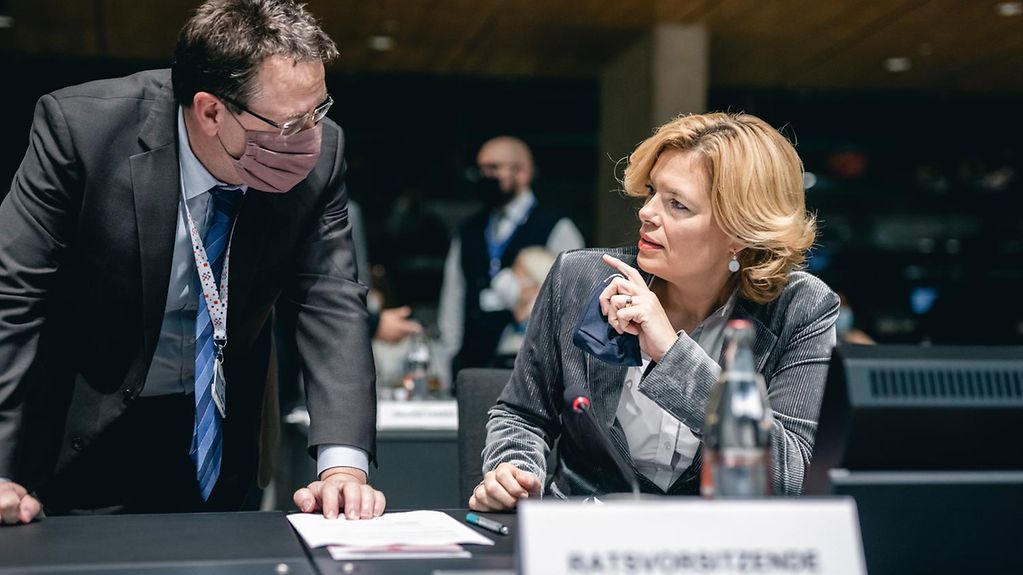EU states agree to reform the Common Agricultural Policy
EU member states have agreed on a "general approach" for the reform of the Common Agricultural Policy (CAP). At the heart of the agreement are binding environmental and climate standards for all member states.
2 min reading time

At a meeting chaired by Federal Minister of Food and Agriculture Julia Klöckner, the EU's agriculture ministers have agreed on a reform of the Common Agricultural Policy.
Photo: Xander Heinl/photothek.net
The agreement was preceded by a compromise proposed by Germany’s Presidency of the Council of the European Union, represented by the Federal Minister of Food and Agriculture, Julia Klöckner. She spoke of a "milestone" and a "systemic transition". One of the central goals of Germany’s Presidency has thus been achieved. The agreement was well balanced, taking into account the imperatives of conservation, environmental protection and animal welfare, as well as food security in Europe. In spite of different agricultural structures in member states, it marks an important step forward towards more sustainability, fairness and equity in competition in the EU. The new requirements are also practicable and suitable for implementation. The additional work for farmers will be rewarded.
Introduction of mandatory eco-schemes
Under the compromise, all EU states will in future undertake to reserve a minimum of 20 per cent of direct payments for environmental and climate programmes, known as eco-schemes. For Germany this translates as almost one billion euros a year. Farmers going beyond the basic EU environmental and climate requirements, for establishing flower strips for insects or taking plant protection measures, will receive additional financial support. This is intended to make climate and environmental agriculture more attractive for farmers. In future, all direct payments are to be tied to meeting environmental requirements.
The proposal also provides for a two-year learning phase. Should a member state not manage to allocate the funds tied to environmental regulations during the transition period, the funds will not be forfeited, but may be otherwise used.
Production of national strategic plans
In future, every EU member state must also draw up a national strategic plan because agriculture is different in each country. This plan must then be approved by the European Commission. It should lay out how a number of predetermined goals are to be achieved – to conserve the natural environment, mitigate climate change and ensure food quality.
Less red tape
Small farmers are to be subject to simpler controls, reducing their administrative workload while still ensuring that they help achieve environmental and climate goals. More assistance will be provided to young farmers.
Where do we go from here?
This week the European Parliament will determine its line. Then the trilogue negotiations can begin, to bring together the still divergent standpoints of the European Council, the European Commission and the European Parliament. The aim is to conclude this process in the first quarter of 2021, so that member states have enough time to elaborate their national strategic plans. The new Common Agricultural Policy is to take effect as of 2023.
Agreement on Farm to Fork Strategy and catch quotas
Earlier during their two-day meeting, the agriculture ministers agreed on the Farm to Fork Strategy and on the 2021 catch quotas for the Baltic Sea. The Farm to Fork Strategy is a sustainable food system for the entire EU – from the producer to the consumer.